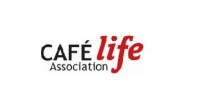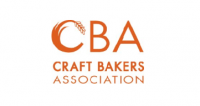Cycle Hire Operations Manual
Foreword
ACT is committed to the safe enjoyment of cycling, both on the roads and on dedicated cycle routes, such as those set up by Sustrans and Byways. We have an active programme to help our members to maintain and develop standards of professionalism and expertise, both in the workshop and in the customer facing roles. Our Cytech accreditation programme has become the industry benchmark for technical competence and won a Government National Training Award when it was first set up in 1995.
ACT has developed this Guide to Cycle Hire in order to assist hire centres to comply with all the relevant
current legislation, including Health & Safety requirements and the regulations regarding cycle use on
the roads.
How this guide can help you
This guide has been compiled to help hire operators to promote the safe enjoyment of UK cycle paths and country roads, by members of the public. It promotes good practice garnered from the existing methods used by experienced operators already working in this sector hiring and selling cycles. The guide is flexible and most appropriate for businesses which have a hire fleet in excess of 50 cycles, but can be easily adapted for use by the smaller operator. We recognise that every business is unique, but this guide offers suggestions which are common to all businesses, large and small, but should not be considered a replacement for the need to comply to all Health & Safety regulations and local bye-laws.
It is vital that each operator must be responsible for deciding what information, briefing and training should be provided to the hirer and when it should be provided. The UK Health & Safety Regulations, made under criminal law, places an obligation on all business to take reasonable steps to protect both customers and employees. Compliance with these requirements in any handover procedure can provide documented evidence that these requirements are being satisfied, plus the customers' entitlement to protection under consumer law and duty of care under common law.
Basically, the hirer is responsible for taking reasonable steps to ensure that the customers are provided with the right type of equipment for their needs and ensuring they can use it correctly. A checklist to show that every cycle has been mechanically examined before it goes out, plus a log of training, advice or information given, will generate a visible audit trail. This will be invaluable in resolving any issue of customer satisfaction which may arise, or an incident involving accident or damage to hirers or third parties.
This guide contains suggestions and examples to help the operator develop their own handover system which is most appropriate for their business. However you decided to proceed, an effective, properly managed handover will raise customer satisfaction, keep the riders and the cycles safe and reduce the number of call outs or recovery operations. The return on investment for the business is that you have happy, smiley customers who have enjoyed the experience, who are more likely return to repeat the experience and who will recommend you to their friends.
Setting up a quality assured handover procedure
Step 1: Assessing the customer
The owner of the cycle hire centre should assess the suitability of staff to carry out cycle hire handovers. It is most important that the staff member is able to correctly assess the skills of the hirer in relation to the type of equipment he or she wishes to hire and is able to offer appropriate advice and assistance where necessary. A simple method of quality assurance is for a qualified member of staff to become ‘mentor' to those undergoing training and for the owner or senior manager to oversee the mentors work. Random checks can be carried out during training in progress.

At the start of a new hire season, it is important that all members of staff are fully trained in the use of any new equipment. A demonstration should be given by management and steps taken to ensure that all staff are fully briefed. If there are local changes to roads or paths, i.e. introduction of shared use, etc, then again, all staff should be fully briefed in order to advise customers accordingly. Any maps or instructions should reflect these changes. Updating staff should be part of the annual pre-season preparations and should form part of the manager/mentor sign off procedure.
Step 2: Processing the hirers
The final stage of the handover procedure is to brief all staff on the way that the company wants the customers to be processed from the time of arrival to riding away. The most important element is the quality audit trail as this provides evidence that a quality handover process has been carried out - keep a record of all the stages and get it signed for.
Some information will be known in advance from pre-booking forms and one person should be responsible for compiling a daily list of expected customers. Your customer handling process may include a standard welcome procedure, guidance to a safe parking facility and indication to customer comforts such as toilets, changing facilities, refreshments etc. This should be followed by an introduction to the handover staff, selection of the equipment plus administration duties such as contracts, return times, etc.
Basic procedures can be based as follows:
| Action | Responsibility | Audit trial |
|---|---|---|
| Customers arrives on site, welcome procedure initiated |
Reception or admin staff |
Time of arrival and number in party logged |
| Pre booking details checked, parents or guardians of children identified |
Admin | Log any new requirements |
| Verify equipment required, take deposit and payment. Give maps and any general information required |
Admin | Log and pass to handover staff |
| Ascertain party leader and brief as necessary. Assess ability of party and offer training and advice as necessary |
Handover staff | Log safety checklist |
| Accompany party to training area and remain until satisfied of safety |
Handover staff | Log any training given |
|
Handover completed. Return time |
Handover staff | Log agreed times |
The ultimate decision is whether or not the handover staff are satisfied with the hire party's ability to use the hire equipment safely and in a satisfactory manner. Where the handover staff are not satisfied, management intervention may be required to agree an appropriate course of action.
Whatever decision is taken, it is vital to make appropriate entries in the log to maintain the quality audit trail.
Step 3: Providing information
What information should the hire operator provide and when should it be provided? Some of the larger centres may use a booking agent and it is vital to ensure that any details given out by a third party on your behalf are 100% accurate. Direct pre-bookings that require confirmation must also be accurate and it the vital audit trail starts with the logged details of this confirmation. Information is bound to change from time to time and it is an important part of quality control that these changes are reflected in all your publications and paperwork. Leaflets, posters, booklets and videos must be monitored and updated on a regular basis; mistakes can be costly if an offence is committed under the Trades Description Act or the Sale of Goods and Services Act.
It is also important for operators to use their local knowledge to decide what pre-hiring information would be of most benefit to the potential hirer - the main objective being to ensure that hirers have sufficient information to maximise an enjoyable and safe experience.
Typical Information Flow Chart
| Action | Outcome | Responsibility | Audit Trial |
|---|---|---|---|
| Brochure request | Brochure sent with terms & conditions, plus booking form to named individual |
Admin | Entry on log or database |
| Advance booking | Booking form completed and returned |
Admin | Forms filed and logged |
| Booking confirmed |
Booker receives confirmation, receipt for any payment and pre-hiring information |
Admin | All enclosures logged |
| Party arrives at hire centre |
Welcome procedure and information on site |
Admin and handover staff |
All payments, advice and training logged |
| Hire party leaves on trip |
Handover completed | Handover staff | Logged off |
Step 4: Handback procedure
The handback procedure is not simply a reverse of the handover. A typical process would be as follows
| Action | Responsbility | Audit Trail |
|---|---|---|
| Customer party arrives back on site. |
Reception / admin | Log time of arrival and number in party |
| Bikes and equipment received and checked |
Handover staff | Log damage or missing equipment |
| Equipment returned to workshop |
Handover staff mechanics |
Logged, checked for damage, cleaned and returned to pool |
| Bikes returned to workshop | Handover staff mechanics |
Logged and safety checked. checklist made ready for next hire |
| Party leader makes any payment adjustment |
Admin | Log details, issue receipt |
| Deposit returned | Admin | Log details & signature |
| Party given feed back forms and asked to complete |
Admin | Comments logged and filed |
| Queries or complaints | Admin / manager | Complaints logged and filed |
| Information brochures, etc | Admin |
Step 5: Sample documentation
It may be useful to consider some sample forms and documents used by some members to inform customers and contribute to the quality audit trail.
These samples have been created exclusively for this guide based on comparison documents currently in use. The 'composite' form of these documents can be adapted and customised to suit your own business needs.
- terms and conditions of hire
- booking confirmation
- customer log sheet
- pre-hire checklist
- quality feedback form
Please refer to the appendix for sample documents
Step 6: Disabled Cyclists
Not all centres can cater for less able customers, but those who do will find extra rewards when dealing with this group of people. It is important, however, to ensure that the group leader accepts full responsibility for the care and safety of all the members of his party. Extra time might need to be allocated for adjusting equipment and full assessment of the capability of disabled cyclists before allowing the hire to proceed. If there is any doubt about safety or ability, then a management decision may be required before proceeding further.
If the hire party is an organised group led by professional carers then they should be asked to sign an appropriate log entry that they take full responsibility and that they are qualified to act in the capacity of group leader. Leaders must be qualified for the job and the ratio of carers to party members will be laid down in the regulations of the organisation providing the carers.





















